May 24th, 2021
If you’re planning on using wood veneer in your upcoming project, it’s a good idea to familiarize yourself with the options at your disposal. Outside of wood species, such as oak or walnut, there are a variety of different “cuts” of veneer that produce noticeably different appearances. In this education series post, we break down the different cuts and ways of ordering wood veneer to ensure you pick the best option for your project.
Veneer Cuts
Rift Cut
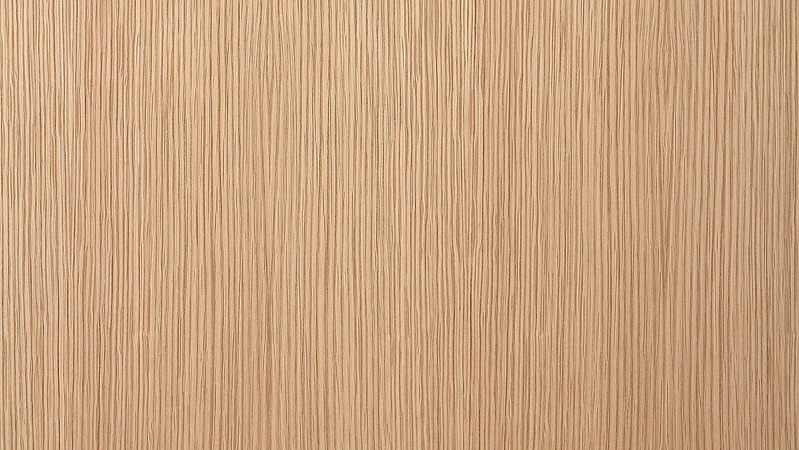
A rift cut is achieved when a quarter of a log is placed on a lathe and cut at an angle, resulting in a very straight grain. Rift cut veneer generally has the straightest grain of all cuts and is free from “flaking” that can be seen in quarter sliced veneer. Rift is a popular veneer cut and is often seen with oak.
Plain Sliced/Flat Cut
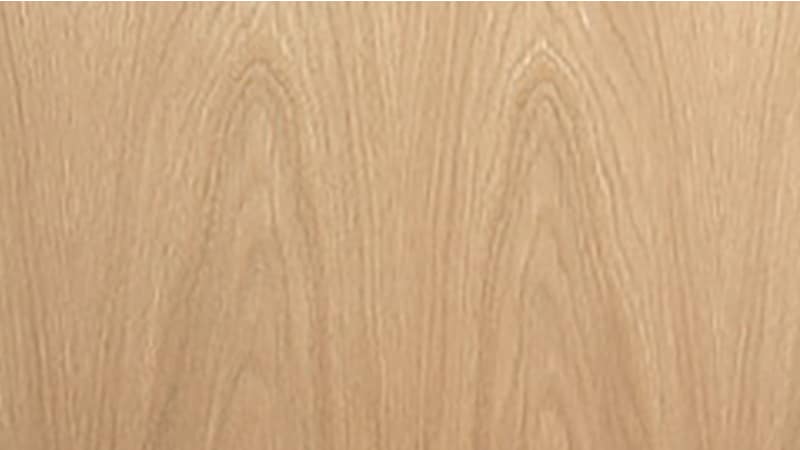
A plain sliced, or flat cut, is achieved by slicing parallel to the length of the log. This often develops a repeating grain pattern called a cathedral, due to the tall arch-like appearance.
Rotary Cut
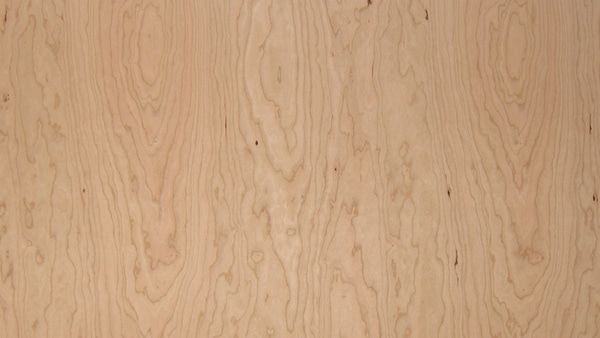
A rotary cut is achieved by mounting a whole log to the center of the lathe and turning it against the blade, like unraveling a roll of paper towels. This produces one continuous ribbon of veneer.
Quarter Sliced
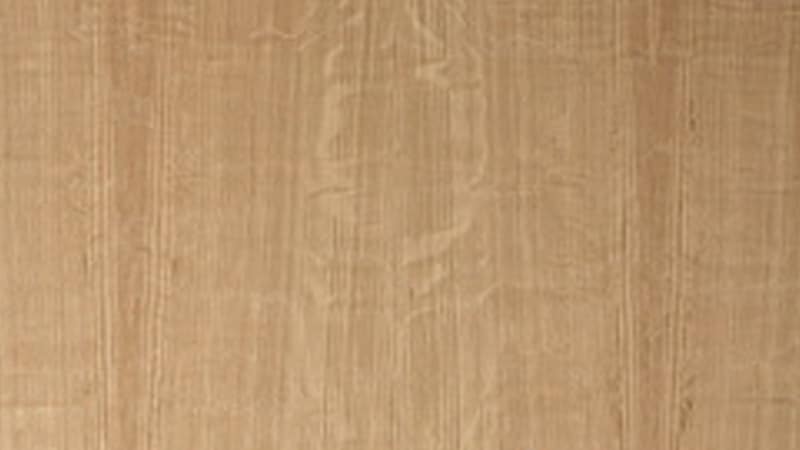
A quarter slice is achieved by mounting a quarter log so the growth rings are perpendicular to the blade, producing a series of stripes. Similar to rift cut, the resulting veneer has a relatively straight grain pattern, but also contains small lines running across called flakes.
Veneer Matching
Slip Matching/Sequence Matching
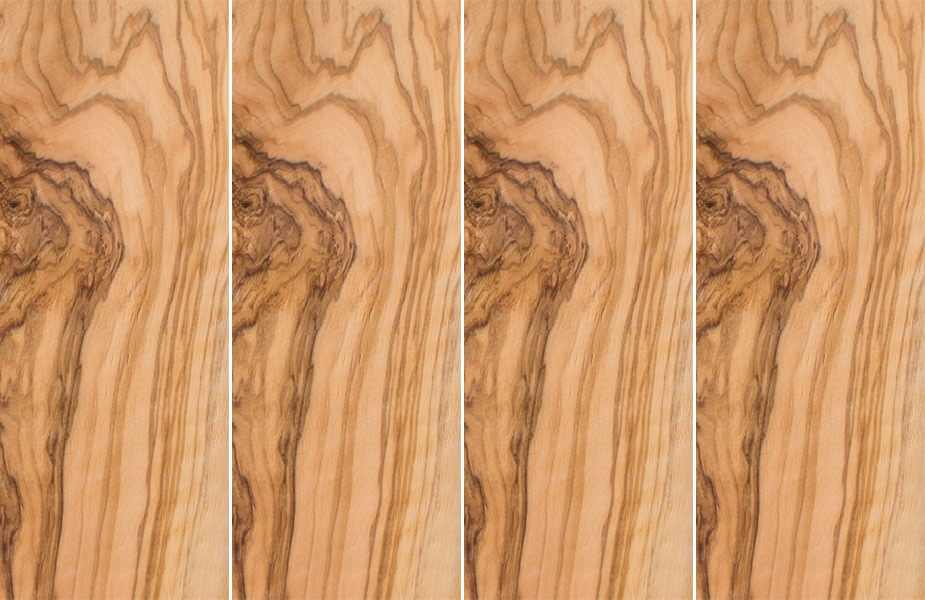
In slip matching, sometimes called sequence matching, the leaves (components) from a single log are laid in order, or sequence, without flipping the pattern, to achieve a somewhat repetitive look that gradually changes as the pattern continues along the log. Slip matching produces a relatively uniform color, since the leaves are in sequence and consistently oriented. Slip matching also typically prevents the “barber pole” pattern and achieves a clean look, especially when used with straight grains.
Book Matching
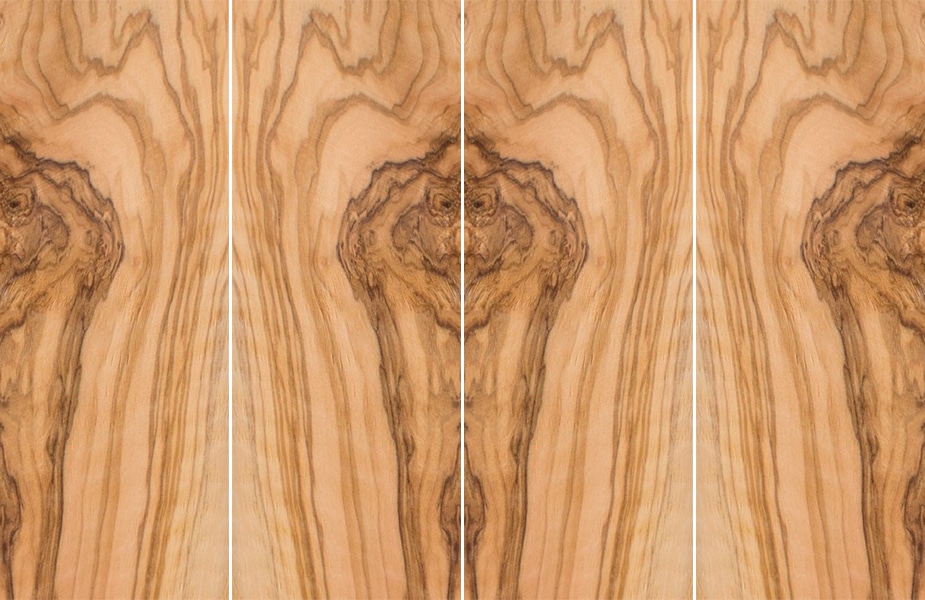
In book matching, every other leaf is turned over to face each other, producing a mirror image at the splice joint, like the pages of a book. The symmetry achieved by book matching can be aesthetically pleasing and accentuate the patterns of the log. However, book matched veneer also produces loose and tight faces that can affect the way the wood accepts stain and can produce a “barber pole” effect.
Random Matching
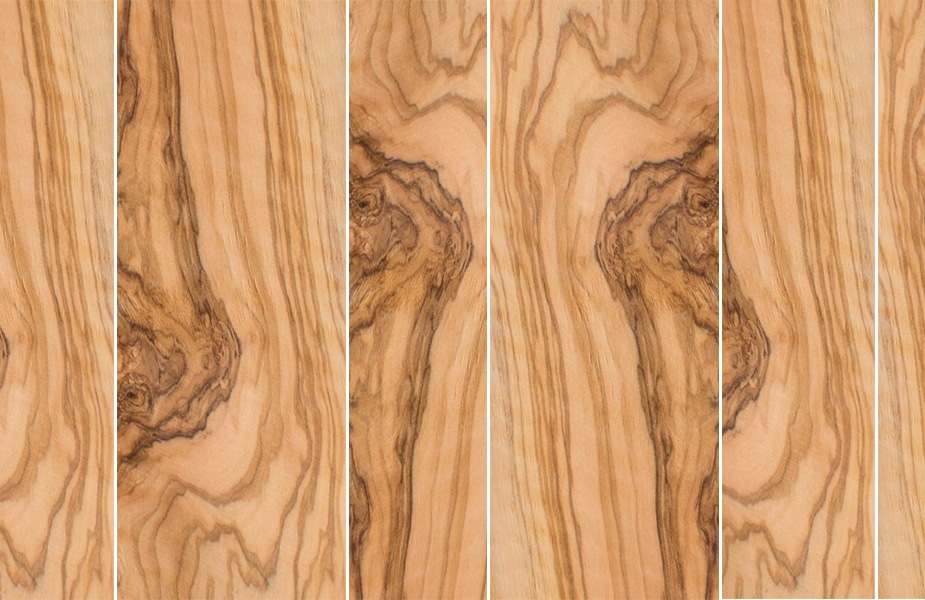
Random matching is just as it sounds, in which leaves are stacked randomly to bring out the natural color and grain variations in the wood. Random matching produces a “board like” effect and can mimic the appearance of solid wood.
If you’re planning on using wood veneer for your next project, consider the species, cut, and match of the veneer when speaking with your designer or millwork fabricator. All of these factors will significantly affect the ultimate look of your project. Remember, wood is a natural material and no two pieces are identical. Even veneers from the same species can vary greatly in color, grain, and texture, so identifying what you want ahead of time will ensure your project turns out exactly as you intended.
About Gilbert
Gilbert is a design, experiential marketing, and construction firm based in New York. If you’d like to learn more or have questions about an upcoming project, contact us here.
December 8th, 2020
August 17th, 2021